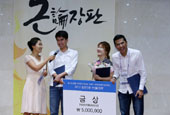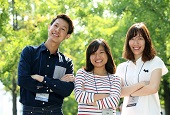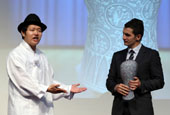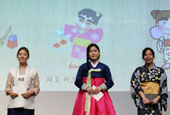Some thirteen teams of university students from around the world recently gathered in Jecheon, Chungcheongbuk-do (North Chungcheong Province), to explore and talk about Korean history, art, philosophy and literature. Of the thirteen teams, two were able to win a third place prize. They were the Laonjena team of students from Korea, China, Azerbaijan and Egypt, and the Ttittibbangbbang team comprised of two Korean students and two Vietnamese students.
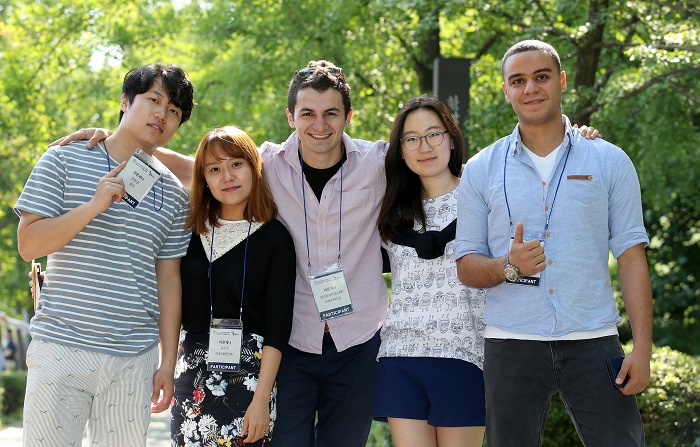
The Laonjena team is comprised of (from left) Jin Chunquan, Kwon Su-jin, Khalilzade Nihat, Lee So-young and Kandil Sami Mohamed. They condensed the life, patriotism and artistic dedication of art collector Chun Hyung-pil (1906-1962), better known by his penname Gansong, into a short play, winning one of the third place spots.
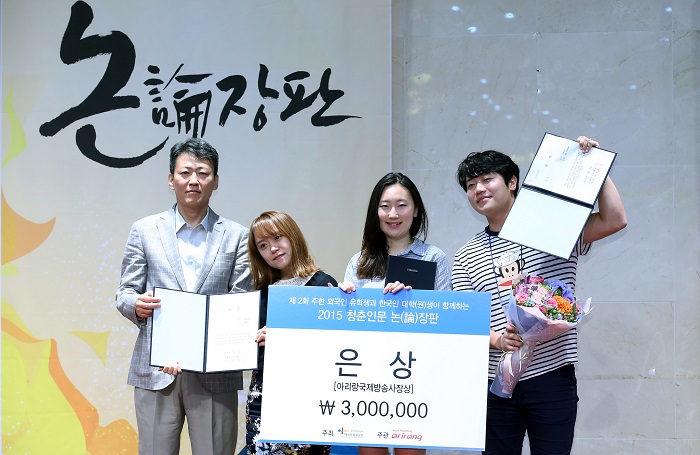
Three of the Laonjena team members are delighted to grab one of the third prizes in the presentation competition.
The Laonjena team consisted of five people from four countries. Jin Chunquan is from China and currently studying at Sungkyunkwan University. Khalilzade Nihat is from Azerbaijan and studies at Hanyang University. Kandil Sami Mohamed is from Egypt and studies at Seoul National University. There were also two Korean students, Lee So-young and Kwon Su-jin, both students at Sookmyung Women's University. The team explored the life of Chun Hyung-pil (1906-1962) (전형필, 全鎣弼) and his dedication to preserve Korea's ancient relics and heritage items.
Chun Hyung-pil, also known by his penname Gansong (간송, 澗松), was an art collector who is known for his activities in the independence movement during colonial times. He gained high esteem in Korea for his efforts to collect and preserve ancient heritage items, ranging from paintings, ceramics, pottery and Buddhist sculptures through to stone artifacts and books. He established the nation's first private museum in 1938 to hand down the items to future generations. The Laonjena team explored Chun's dedication to preserving such priceless assets, his patriotism, his sense of community and his sense of social responsibility. They wanted to give spectators a chance to appreciate Korean art and literature and to think about accepting cultural diversity.
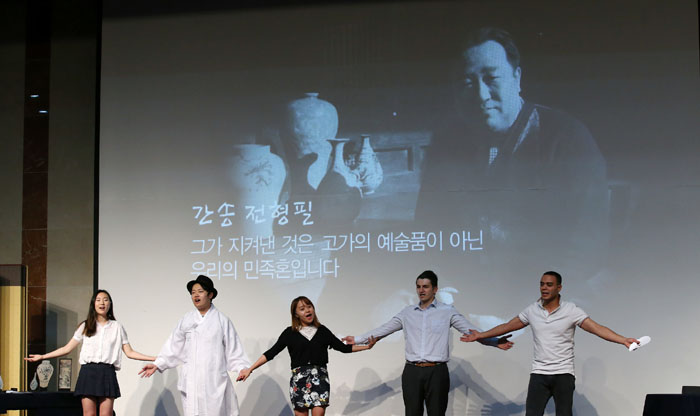
The Laonjena team sings 'In This Moment' with lyrics that they wrote themselves based on the life of Chun Hyung-pil (1906-1962).
The Laonjena team performed a 15 minute play that consisted of several scenes. The starting scene showed Gansong purchase a historical artifact after fierce competition with non-Korean art collectors at an auction in Andong, Gyeongsangbuk-do (North Gyeongsang Province). They also showed that the items he preserved have now been handed down to modern generations and are enjoyed by people from both Korea and other countries.
The team explored cultural properties plundered in Azerbaijan and Egypt, from where two of their team members hail. Speaking about the importance of preserving historical artifacts, the team stressed that we need to remember the efforts of our ancestors and to carry out more vibrant activities to share their memories.
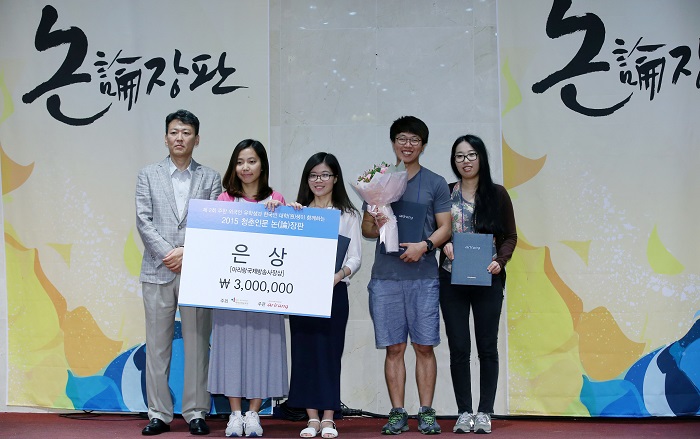
The Ttittibbangbbang team wins one of the third place prizes. A representative from Arirang TV (far left) awards the prize to team members Nguyen Nguyen Bao Yen, Le Thi Van Anh, Kwak Jong-wuk and Yun He-ra.
A third prize was also awarded to the Ttittibbangbbang team. The team members are Yun He-ra from Korea, currently studying at the Academy of Korean Studies, and Kwak Jong-wuk, also from Korea, who is studying at Andong University. There are also Nguyen Nguyen Bao Yen and Le Thi Van Anh, both from Vietnam and studying at the Academy of Korean Studies.
The Ttittibbangbbang team looked into the life of Esther Park (1876-1910) (김점동), Korea's first female doctor of Western medicine. She played a critical role in treating many female patients and giving them hope. During her times, Joseon was a very conservative country with strict rules where most female patients couldn't get proper medical treatment because they were not allowed to show their bodies to a male doctor.
Park was known to have worked as a translator at a hospital run by missionaries where she dreamed of becoming a doctor. With the help of missionary Rosetta Hall, Park was able to study and graduated in 1900 from the medical school at the women's medical college in Baltimore, from what is now Johns Hopkins University. After she returned to Korea, she started to work at a woman's hospital, the first of its kind in Korea, taking care of over 5,000 patients on average every year for about ten years. Her dedication to the development of medicine, raising public awareness of hygiene, as well as improving women's rights, is still remembered by people to this day.
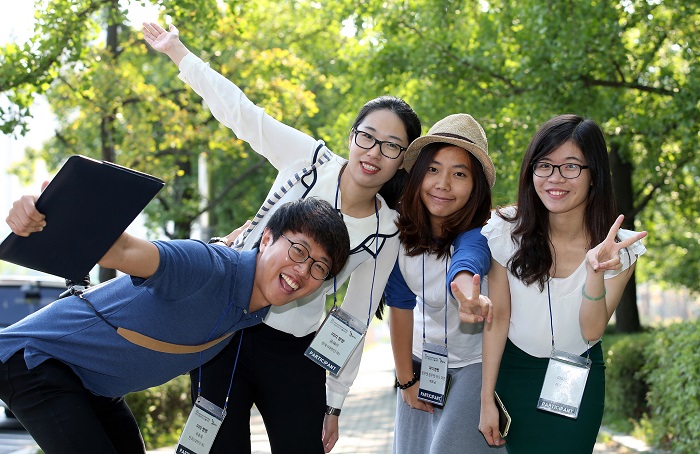
The Ttittibbangbbang team looks into the life of Esther Park (1876-1910), Korea's first female doctor.
The Ttittibbangbbang team members said that, "We always had to struggle with a lack of information about Park. However, we managed to meet some researchers who had studied Esther Park's husband, Park Yu-san, and Rosetta Hall. When we heard their stories, it felt like the figures were brought back to life."
The team said that they are planning to update the information about Park at the website of the foundation dedicated to her deeds, and to make it available through search engines such as Naver. They hoped that in the future Park would receive more attention from scholars of Korean history.
By Lee Seung-ah
Photos: Jeon Han
Korea.net Staff Writers
slee27@korea.kr
